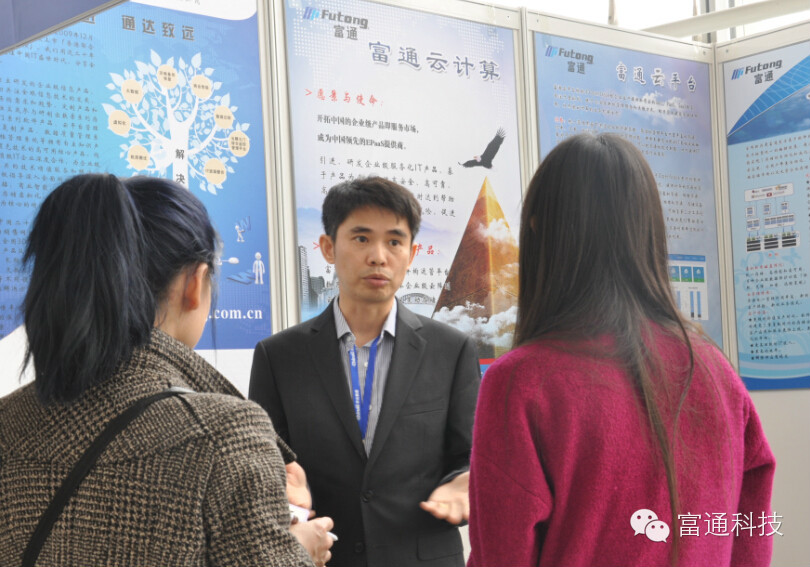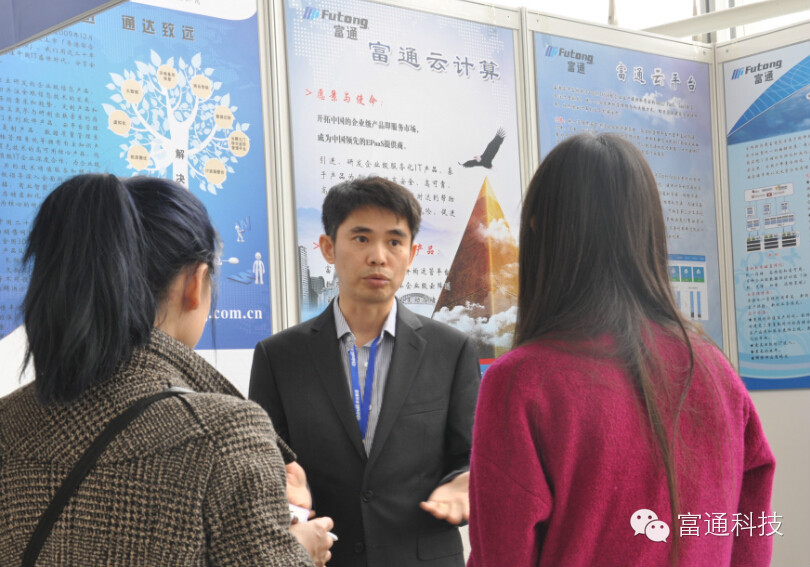Recently, the news of Futong Dongfang's entry into the cloud computing field quickly attracted widespread attention in the industry. With award-winning products and the implementation of benchmark projects, it has sparked a race among media outlets to report on it. The following is the original news article by Xue'er, a reporter from 51CTO.
Cloud computing has gone through various stages from the peak of conceptual hype to the current relatively calm period over the past few years, and the path to the domestication of cloud computing in China has been exceptionally challenging. The development of cloud computing products requires substantial investment, and the profit model is not yet clear. The level of popularity and acceptance of cloud computing in China's IT sector and among enterprises are not particularly ideal. On the other hand, with the rapid development of technologies such as big data and mobile internet, along with the drive of the domestication wave, the transformation of enterprise IT is imminent. At the recently concluded third session of the 12th National People's Congress, Premier Li Keqiang proposed the idea of "promoting the integration of Internet Plus, cloud computing, big data with modern manufacturing." This not only points out the direction for the development of the cloud computing industry but also sets higher requirements for its growth.
As one of the early enterprise-level IT product distributors in China, Futong has experienced the main periods of China's informatization construction history. Now, with the continuous deepening of the transformation of China's information industry, especially in the era of internet and cloud computing transformation, Futong has also embarked on a journey of corporate transformation. Leveraging years of industry and channel experience, understanding of customer needs through close proximity to their businesses, and technological accumulation from cooperation with top domestic and international IT companies, Futong has grasped the pulse of technological development trends and market changes to develop independent enterprise-level information products. Speaking of Futong's journey towards cloud computing transformation, its Vice President and General Manager of the Enterprise Cloud Computing Product Department, Zou Jun, described for us the challenges he sees in the development of domestic cloud computing and the solutions to these difficulties.

Figure 1 - Zou Jun, Vice President and General Manager of the Enterprise Cloud Computing Product Department at Futong Dongfang
Challenge 1: Heterogeneous Platform Virtualization Management Difficulties
When the concept of cloud computing emerged, many large and medium-sized enterprises began to try to build private clouds. Due to the significant differences between cloud computing architecture and traditional architecture, there was not much experience and best practices to refer to, so there were generally two approaches. One was guided by vendors, adopting different commercial virtualization or cloud platform products to achieve virtualization and cloudification of part of the IT architecture. The other was to build a technical team and rely on open-source software to build a cloud platform. However, in general, there was a lack of unified architecture and standards. In most cases, not only was the true value and advantage of cloud computing not realized, but the management costs were also increased.
Zou Jun told us that many enterprises have different virtualization technologies and cloud platforms within their organizations. These new architectures coexist with traditional architectures but lack unified management, making the enterprise IT environment more complex and harder to manage than in the past. For example, on multiple heterogeneous virtualization platforms or cloud platforms, different departments are competing to use resources from the resource pool. Where exactly have these virtualized resources gone? Are they being used for the most critical projects? Are unused resources being effectively recycled? Enterprises actually find it difficult to grasp the overall usage of these resources. Effectively managing these heterogeneous virtualization platforms in a unified manner is also very challenging. Additionally, how to flexibly expand, freely combine, and deploy various business application modules according to the actual situation of the enterprise is another major challenge in cloud deployment and management.
After understanding these needs and challenges of users, Futong has designed and developed the Futong Cloud Management Platform product to provide enterprises with a high-security, high-reliability, high-performance enterprise-level Platform as a Service (PaaS) product, supporting the management of heterogeneous environments for enterprise customers (including traditional physical environments, heterogeneous virtualizations, and heterogeneous cloud platforms), and leading the EPaaS (Enterprise Platform as a Service) market. A feature of the Futong Cloud Platform can help customers manage heterogeneous virtualized environments, improve resource utilization rates, and fully leverage existing IT resources. Through virtualization technology and intelligent scheduling technology, it effectively increases the utilization rate of server resources, reduces subsequent server investment, and achieves the goal of green energy saving and emission reduction. Currently, most large and medium-sized enterprises are facing the situation of using multiple virtualization technologies such as VMware, Microsoft, Xen, and KVM. The Futong Cloud Platform, through heterogeneous virtualization management technology, unifies the management of heterogeneous resource pools, achieving centralized and unified management of computing resources, storage resources, and network resources, simplifying management complexity, reducing the number of maintenance personnel and technical difficulty; at the same time, it strengthens high availability and meets the requirements of business continuity.
Challenge 2: Storage Becomes the Bottleneck in Cloud Performance Development
During the collaboration with enterprise customers, Futong discovered that many performance limitations of the cloud are not in computing or networking, but in storage. For instance, many companies that offer cloud services are actually using traditional array storage to support their cloud platforms. When multiple users and applications use the same traditional storage array in a cloud environment, it can limit the performance of the entire cloud. Currently, cloud computing has shifted from being a concept to being implemented, with more and more enterprise applications being migrated to the cloud. Traditional array storage has performance bottlenecks and scalability issues; while new types of storage systems, represented by open-source distributed storage like Hadoop HDFS and cloud storage available on the market, are mostly suitable for video and image sharing and are essentially targeted at individual consumers. They do not meet the requirements of enterprise applications in terms of stability and read/write scenarios, making storage a key factor in hindering enterprises' transition to the cloud.
To meet the application needs in the enterprise cloud computing environment, Futong has launched a new generation of storage architecture products, Supu Cloud Array and Cloud Array Xincun. Futong's storage products are designed to meet the storage demands of cloud environments and represent a new generation of enterprise-level software-defined storage. Their primary features include high performance and the ability to scale horizontally. Secondly, they possess the stability of traditional arrays, providing a highly stable and high-performance cloud array for the migration of enterprise applications to the cloud and virtualized environments. Supu Cloud Array is an integrated machine optimized by Cloud Array Xincun in conjunction with hardware, capable of providing physically isolated virtualized disk arrays for multi-tenant and multi-application scenarios, meeting the high IOPS demands of enterprise-level storage performance.
Supu Cloud Array and Cloud Array Xincun storage products are jointly developed by Futong Dongfang and Zadara Storage from Israel. Zadara Storage has strong capabilities in software-defined storage, with more than 30 global data storage centers across four continents and experience in deploying over 10PB of data storage. Its main partners include Amazon AWS, Microsoft Azure, and Toshiba.
Software-defined storage extracts the control logic from hardware and implements functions such as volume management, RAID, snapshots, replication, and data protection through software. It can also be freely managed and scaled via software. Software-defined storage achieves the same functionality and similar performance as expensive traditional SAN and NAS storage devices, but with the lower costs associated with x86 architecture. It also offers greater flexibility and better scalability provided by cloud computing.
Additionally, the Yunzhen Xincun software solution provided by Futong can be applied to the service operator market, supporting operators in offering storage services to the public. The Yunzhen Xincun software solution supports thousands of storage nodes with storage capacities up to hundreds of PBs and includes a billing module. Most critically, Yunzhen Xincun pools all nodes to form multiple virtual, dedicated, and private disk array VPSAs at the logical level. Each VPSA exclusively occupies specific CPU cores and designated memory and disks within the nodes, thereby ensuring the stability and data privacy of the VPSA. Furthermore, it uses high-speed network RAID to write data across multiple node hard drives, thereby enhancing performance and data security.
Zou Jun stated that although the trend towards domestic products is very evident at present, in the mid-to-high-end storage field, foreign manufacturers still dominate. Futong's integrated software and hardware product, Supu Cloud Array, has a distinct advantage in supporting enterprise-level application scenarios. For applications with high IO demands such as databases, ERP, and VDI, Supu Cloud Array can provide extremely high IO performance, along with secure data isolation for multi-tenant environments and on-demand horizontal scaling. This allows Supu Cloud Array and Cloud Array Xincun to remain competitive with foreign manufacturers in the enterprise sector in this domain.
Prudently Optimistic In Treating "Internet Plus" and Cloud Computing
Looking back on the journey of cloud computing development, especially in China, Zou Jun believes that Li Bai's poem "Difficulties of Travel" best describes the hardships involved: "Difficult is the path, difficult is the path, with many a branching trail, where is the present peace?"
On the other hand, starting from the second half of 2013, we have also seen cloud computing accelerate its development pace in China. Many enterprises have truly begun to promote the implementation of domestic cloud computing and have entered a substantive construction phase. Zou Jun stated that he maintains a "prudently optimistic" attitude towards the development of cloud computing in the coming years, for two reasons.
Firstly, the "IOE Elimination" movement and the trend towards domestication have made it very difficult for domestic manufacturers to surpass foreign manufacturers under the traditional software and network and storage technology architectures. Only under the new cloud architecture can domestic enterprise-level IT technologies achieve an overtaking maneuver. This is not just about information security, but also about competing for the right to set technical standards. Therefore, the promotion and popularization of cloud computing will receive greater impetus and support within the country.
The other aspect is the opportunity brought about by the "Internet Plus" transformation. "Internet Plus" essentially means that traditional enterprises need to undergo O2O transformation, expand their internet channels, and adopt a model that combines online and offline approaches. This forces enterprises to shift from traditional siloed IT architectures to more flexible cloud computing architectures. Zou Jun believes that these two factors present significant opportunities for cloud computing companies, but we cannot be blindly optimistic. After all, there is still a gap between domestic cloud computing technology and that of advanced foreign countries. Faced with the high barriers of technology, we must learn from the advanced experiences of top domestic and international companies and follow a path of domestication that combines cooperation, integration, and independent research and development.
When discussing Futong's future direction, Zou Jun still uses a line from Li Bai's poem "Difficulties of Travel" to describe their planning prospects: "There will be times when the strong wind breaks the waves, setting the cloud sail to cross the blue sea." Futong will continue to focus on customer needs, actively cooperate with advanced domestic and international companies, introduce and integrate existing advanced technologies, develop products and services with their own brands, and ultimately help enterprises achieve business value, promoting the transformation of Chinese enterprises in the tide of "Internet Plus." (Article source: http://cloud.51cto.com/art/201504/470863.htm)







